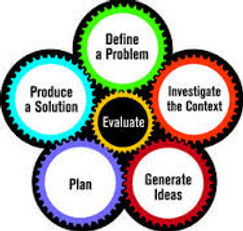
Buddy Lisk
Mechanical Engineer
Engineering Process
Currently I am enrolled in the senior design class at Kansas State University. This class has helped me develop my own personal engineering process for when I encounter real world engineering problems. After doing multiple design projects I have become accustomed to a basic five-step process that has helped me develop a solution quickly and accurately.
Step 1: Define the Problem
To begin a path to a design you first must define the problem with a clear definition of the problem. This is due to the fact that most of the time a design problem begins as a vague, abstract idea. Which it is up to engineers to take that idea and to bring it to life.
Step 2: Gather Pertinent Information
The next step in the design process is to collect all the information available that relates to the problem. If there is maximum effort placed on this step there will be big dividends later on in the design process. When gathering information it can reveal facts about the problem that could lead to redefining the problem. You may also find mistakes made by other engineers that could help push your project in the right direction.
Step 3: Generate Multiple Solutions
This step begins with creativity in generating new ideas that could solve the problem. You should start with existing solutions and tear them apart to find out what’s wrong with the solutions. Then focus on how to improve its weaknesses. It is suggested to have multiple brainstorming sessions during this step to help generate multiple solutions with different views.
Step 4: Analyze and Select a Solution
After multiple solution is have been found the next step is to analyze these solutions and decide which one best fits your problem. This step is highly subjective and should be made by a group instead of just one person. This process may be lengthy, but to find the best solution you should analyze each alternative solution against the selection criteria from step 1.
Step 5: Test and Implement the Solution
This final phase of the design process is implementation which refers to testing, construction, and manufacturing of the solution to the design problem. There are several methods of implementation that include prototyping and concurrent engineering. You also should include documentation of the design solution and applying for patents [1].
Figure 1: Engineering Design Process [2]
Sources:
[1] Seyyed Khandani. www.saylor.org. Engineering Design Process. Accessed November 18, 2015
[2] Engineering Design Process. www.pinterest.com. Accessed November 18, 2015
